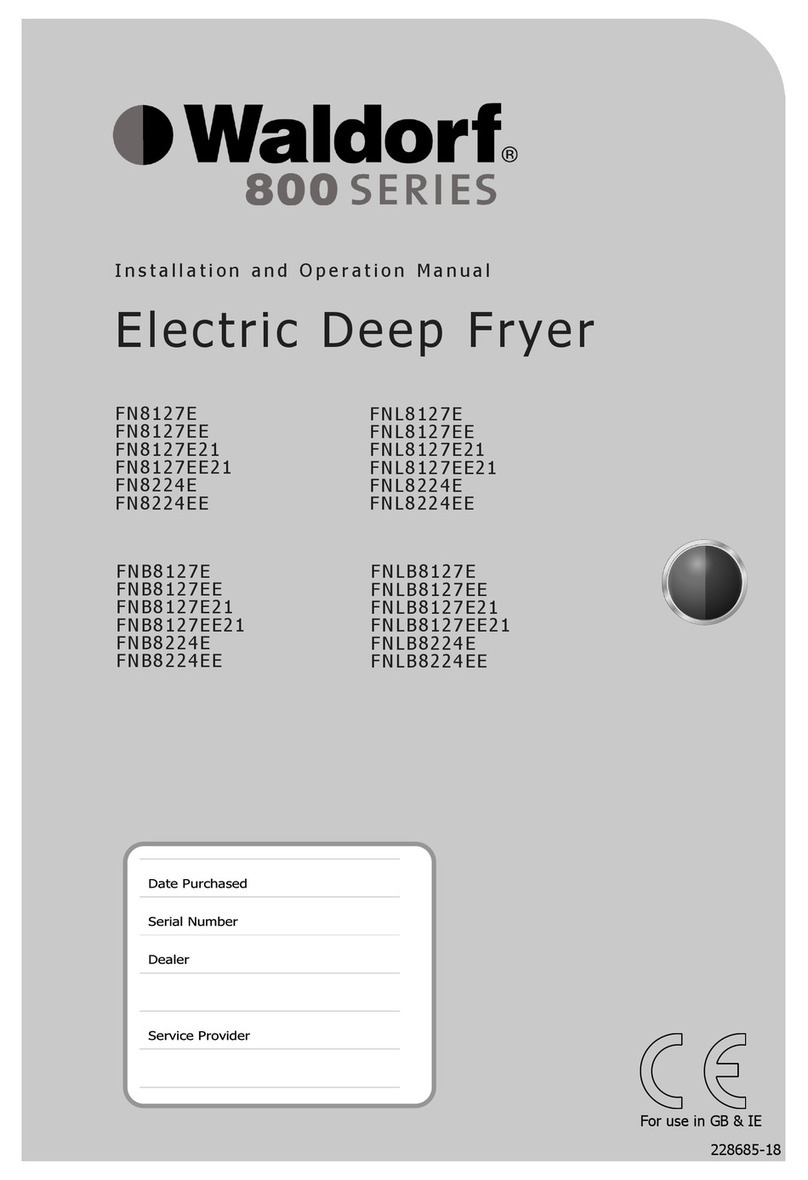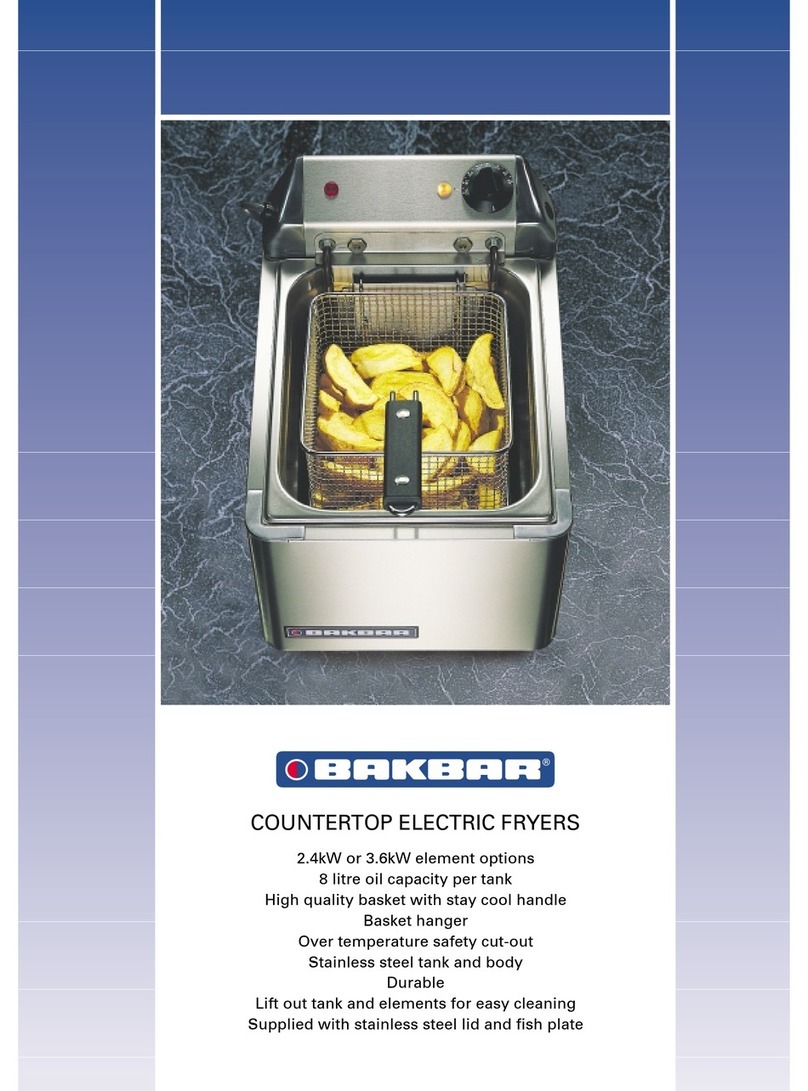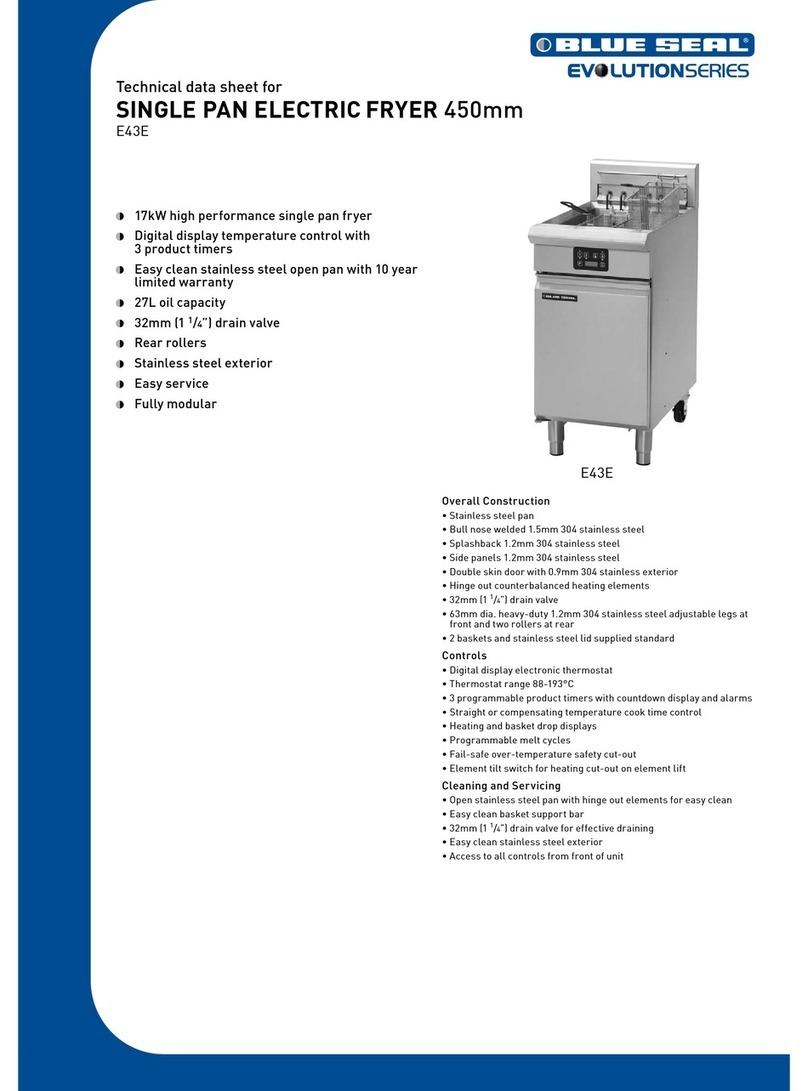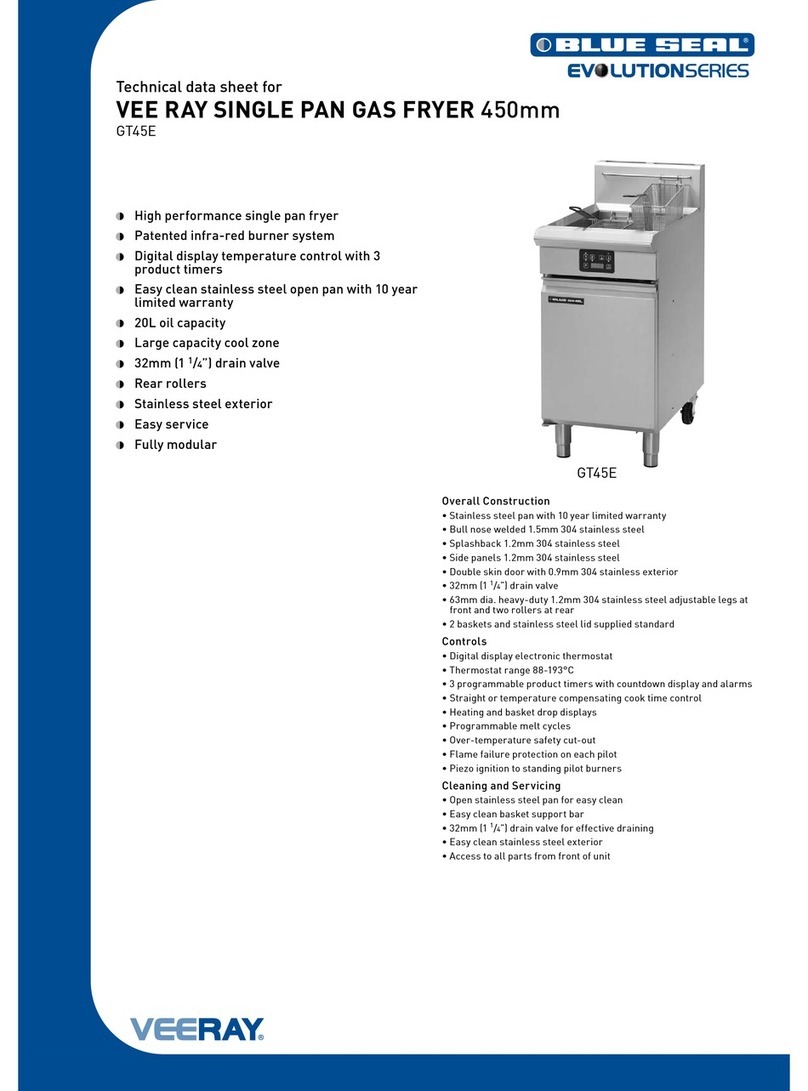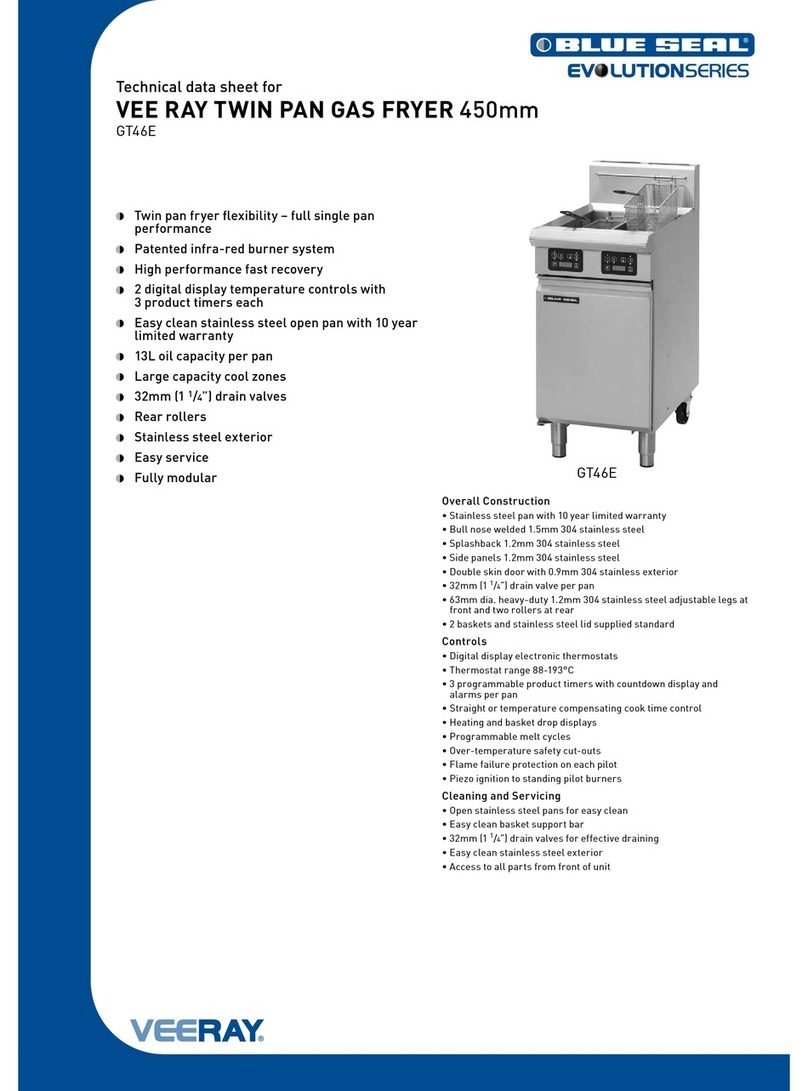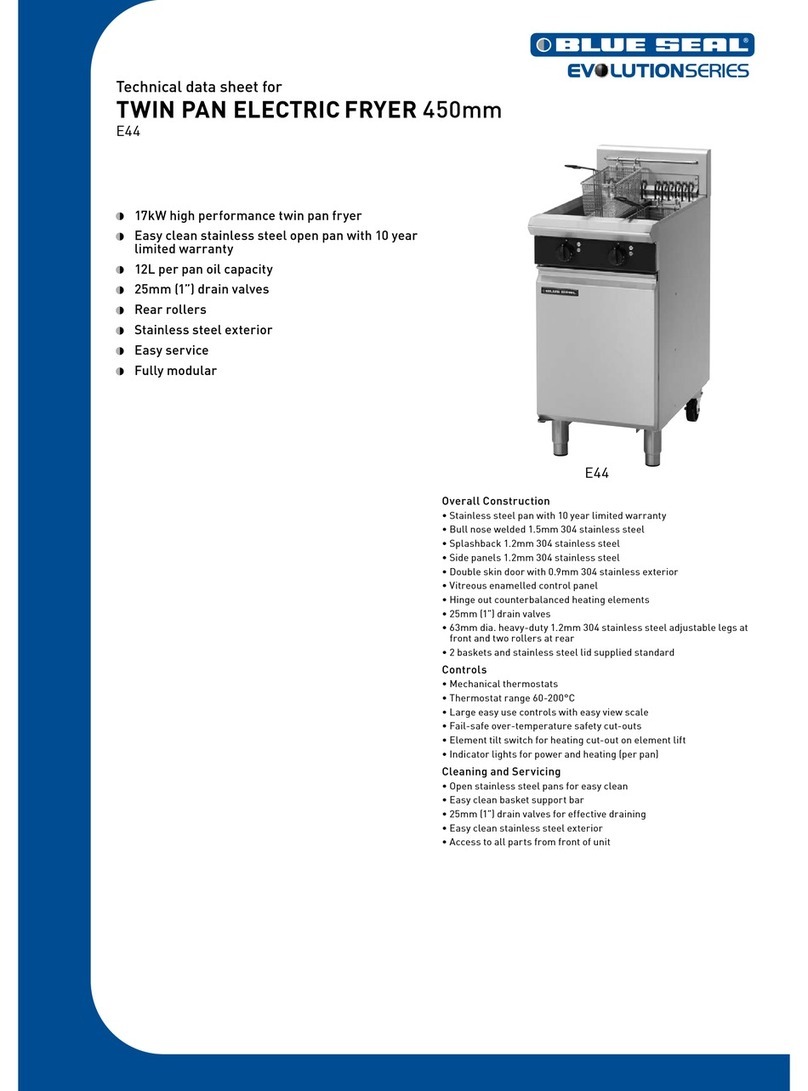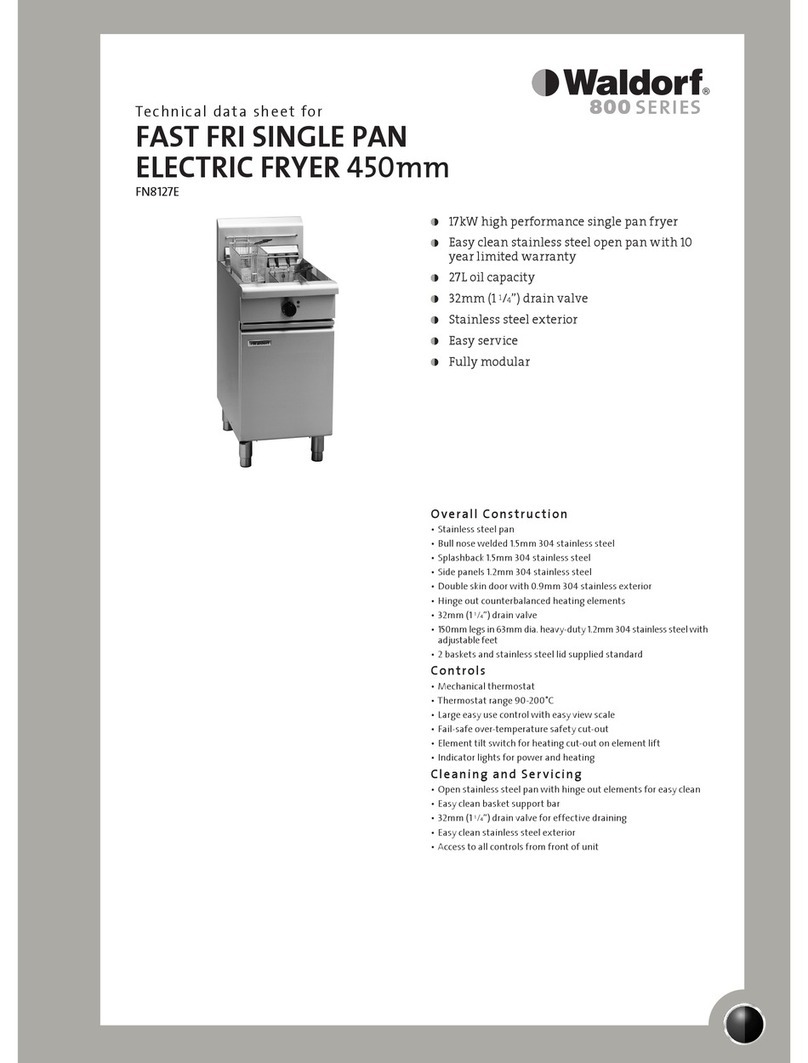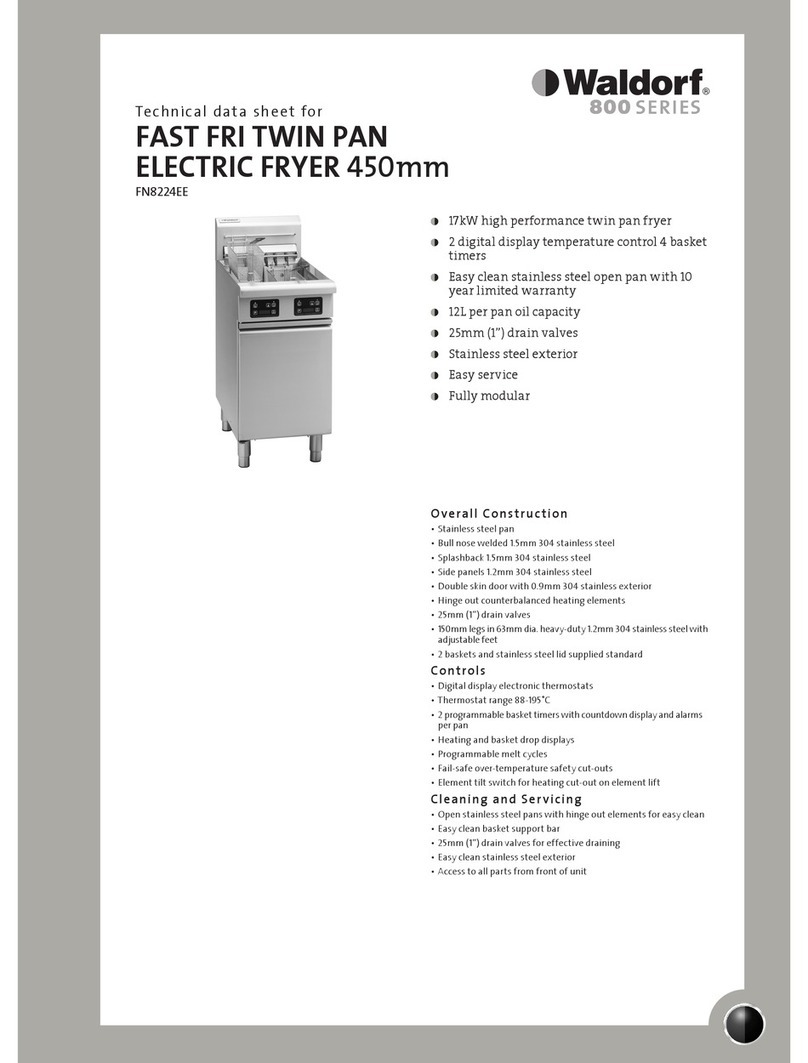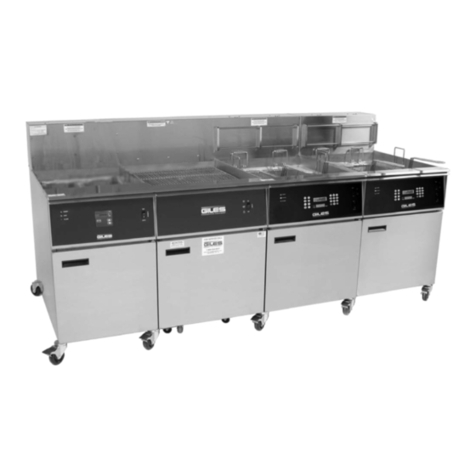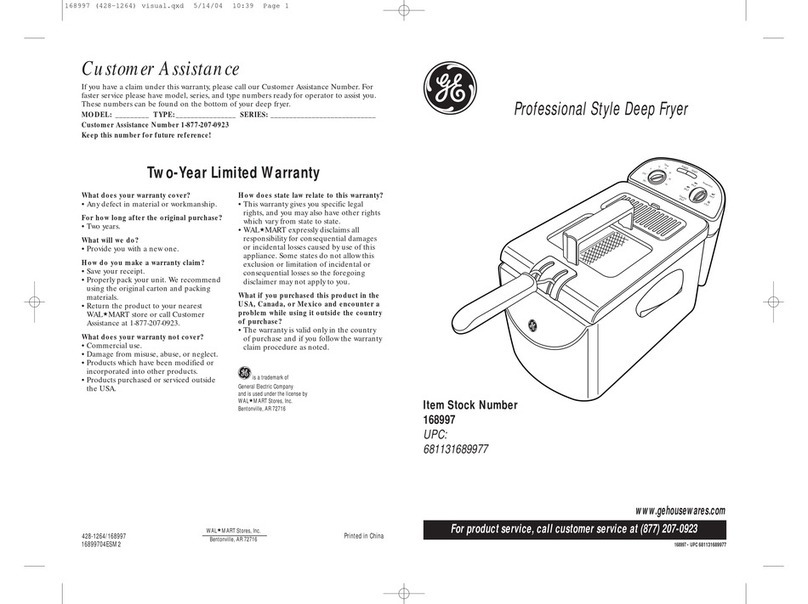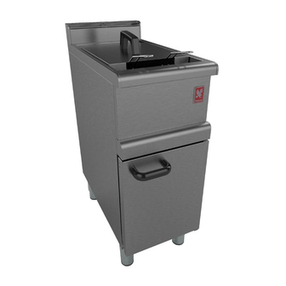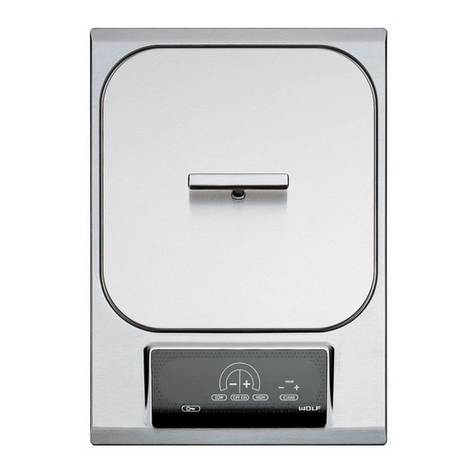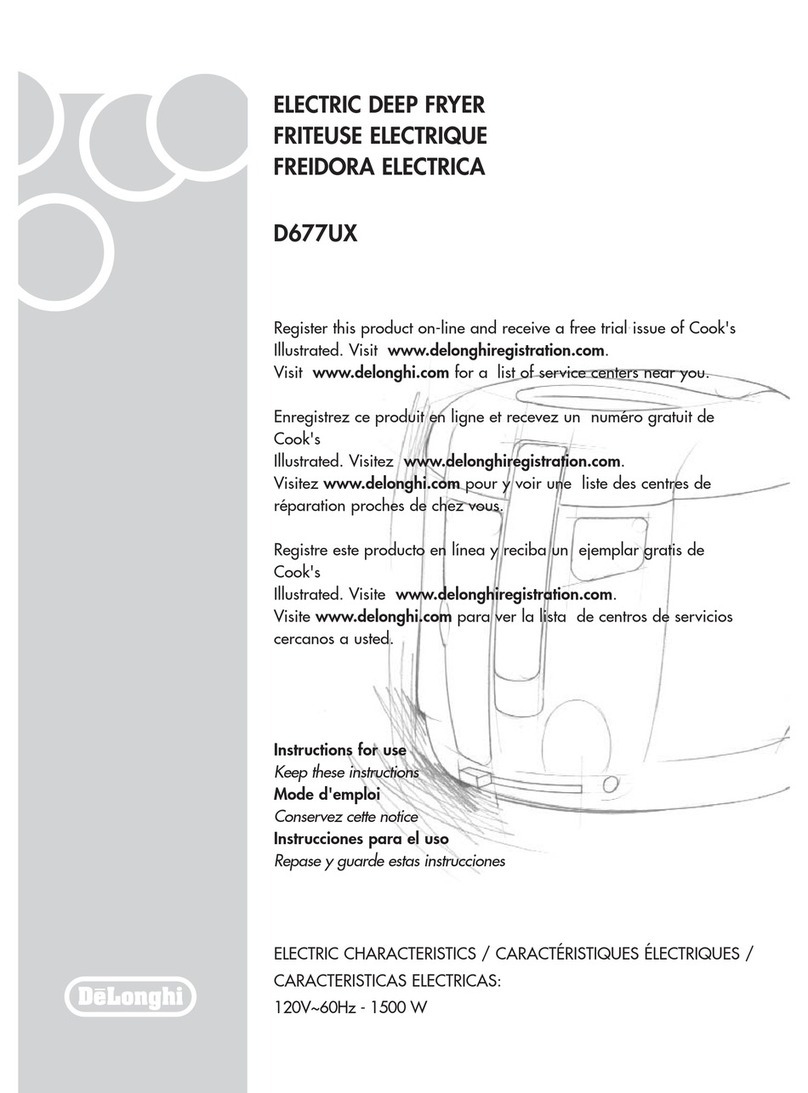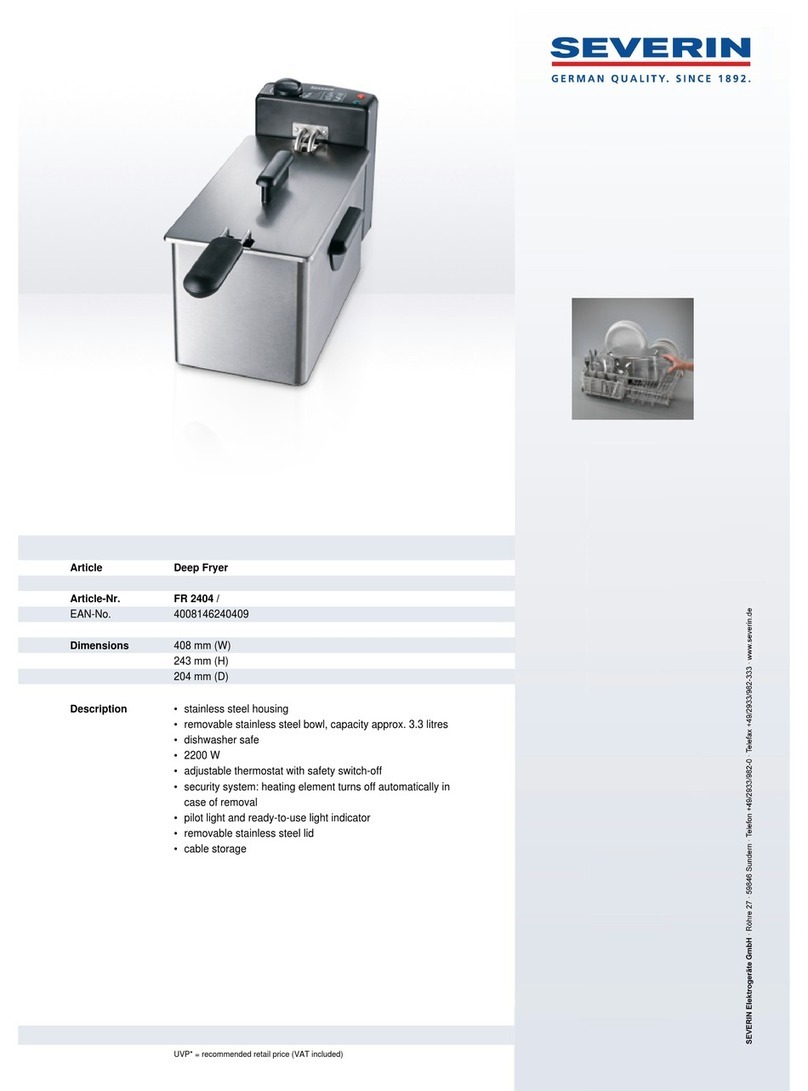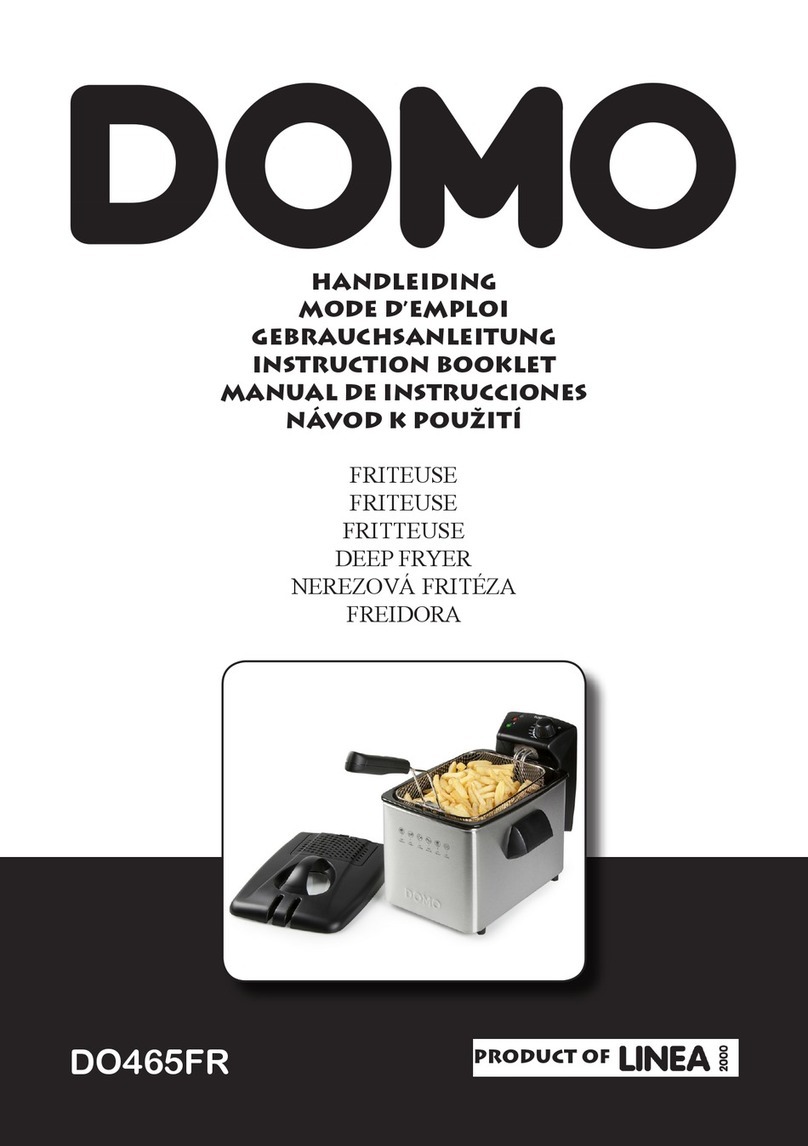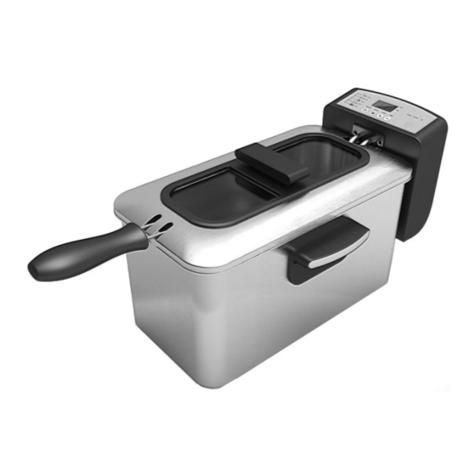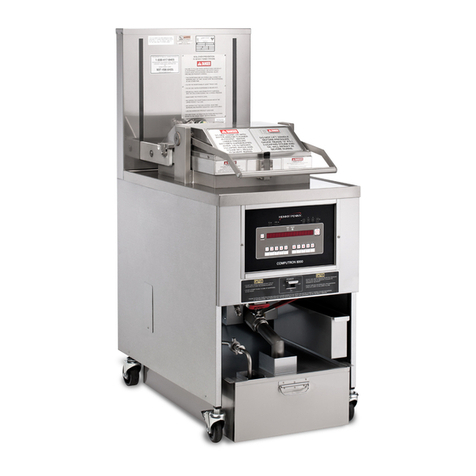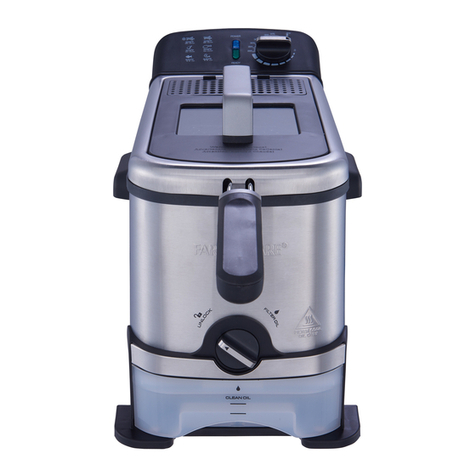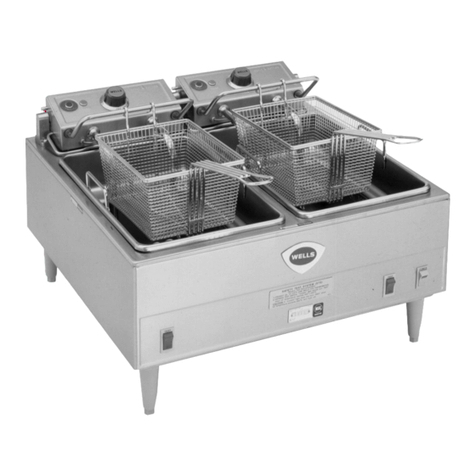
2 Installation
8
Clearances
NOTE:
Only non-combustible materials can be used in close proximity to this appliance.
In order to facilitate easy operation, drainage and servicing of the appliance, a minimum of 600mm clearance should be
maintained at the front of the appliance.
Any gas burning appliance requires adequate clearance and ventilation for optimum and trouble-free operation. The following minimum
installation clearances are to be adhered to, (Refer ‘Specifications’ section).
Assembly
This model is delivered completely assembled. Ensure that the legs are securely attached.
NOTE:
This appliance is fitted with adjustable feet to enable the appliance to be positioned securely and level. This should be
carried out on completion of the gas connection. Refer to the ‘Gas Connection’ section below.
Gas Connection
NOTE: ALL GAS FITTING MUST ONLY BE CARRIED OUT BY A QUALIFIED SERVICE PERSON.
1. 400mm Gas Fryers do not require an electrical connection, they function totally on the gas supply only.
2. It is essential that the gas supply is correct for the appliance to be installed and that adequate supply pressure and volume are
available. The following checks should be made before installation:-
a. The Gas Type the appliance has been supplied for is shown on coloured stickers located
above the gas entry point and next to the rating plate on the inside of the fryer door.
Check that this is correct for the gas supply the appliance is
being installed for. The gas conversion procedure is detailed in Appendix A, in this
manual.
b. Supply Pressure required for this appliance is shown in the ‘Specifications’ section of
this manual. Check the gas supply to ensure that adequate supply pressure exists.
c. Input Rate of this appliance is also stated on the Rating Plate fitted to the inside of the
access door and in the ‘Specifications’ section of this manual. The input rate should be
checked against the available gas supply line capacity. Particular note should be
taken if the appliance is being added to an existing installation.
NOTE:
It is important that adequately sized piping runs directly to the connection joint on appliance, with as few tees and elbows as
possible to give maximum supply volume.
3. A suitable joining compound which resists the breakdown action of LPG must be used on every gas line connection, unless compression
fittings are used.
The connection to the appliance is 3/4” BSP male.
NOTE:
A Manual Isolation Valve must be fitted to the individual appliance supply line.
4. Correctly locate the appliance into its final operating position and using a spirit level, adjust the legs so that the unit is level and at the
correct height.
5. Connect the gas supply to the appliance.
6. Verify operating pressure remains correct. Please note that outlet pressure is factory set and is NOT to be adjusted.
7. Check all gas connections for leakages using soapy water or other gas detecting equipment.
8. Check that the gas supply pressure is as shown in the ‘Specifications’ section, ‘Gas Supply Requirements’ tables.
Rating Plate
Location
WARNING:
DONOT USE ANAKED FLAME TO CHECK FOR GAS LEAKAGES.

